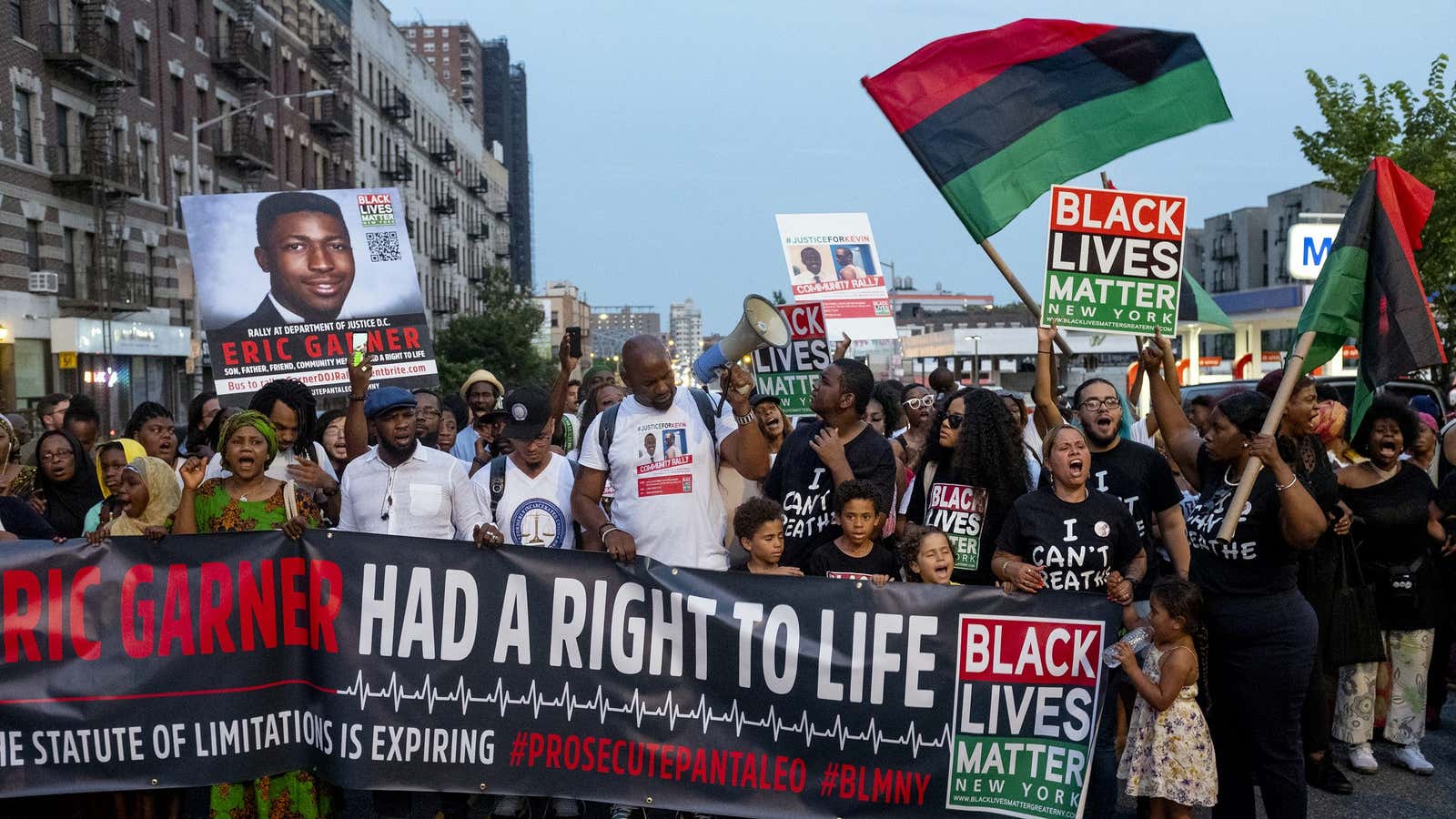With almost 700 people in prison for every 100,000 residents, the US has the highest rate of incarcerated people in the world. Close to 3% of the American population, in fact, is now in prison.
What’s worst, a third of that population is black. That is wildly disproportionate given that black people account for only 12% of the total US population. The average rate of imprisonment of African Americans in state prisons is more than 5 times (pdf, p.5) that of white people. In some states (Iowa, Minnesota, New Jersey, Vermont, and Wisconsin), there are 10 times the number of black people in prison compared to white people.
Now, a new study breaks down this problem of prejudice in the American judicial system in even more disturbing detail. According to the study, it isn’t just being black that makes a person more likely to be sentenced to jail in the US, it’s how black they are. A person’s lifetime chance of having been arrested, the study found, is directly proportional with the darkness of their skin.
Ellis Monk, the Harvard sociology professor who authored the study, drew on data collected in a landmark national survey conducted between 2001 and 2003. While it’s been 15 years since the survey took place, its extensiveness and depth makes the data collected a valuable source for analysis. The interviewers who administered the survey actually rated the skin color of the people they spoke to, from very light to very dark. That allowed Monk to find associations between the color of one’s skin and their encounters with the justice system.
After accounting for differences like gender and level of education, he found that African Americans have an overall 36% chance of going to jail at some point in their lifetimes. Dark-skinned African Americans, meanwhile, have a near 66% chance. That’s a full 30% increase.
“Put bluntly, while being black (and poor) may already predispose one to have a higher probability of contact with the criminal justice system and harsher treatment…being perceived as blacker intensifies this contact further and may increase the harshness of one’s treatment by the [criminal justice system] as an institution,” Monk writes in the study.
“Racial inequality is not just a matter of belonging to this broad, homogenous category of black,” he further told Quartz. “But there’s subtle gradations in skin tone, ranging from very fair skin to very dark skin.”
Like many Americans, African Americans often come from mixed heritage. As a result, there is a great variety of skin tones present in the African American community. Further, the so-called “one-drop rule,” a now-dismissed legal framework (but still embraced by some) by which anyone with at least one ancestor from sub-Saharan Africa should identify as African American, made the spectrum of people belonging to the African American community even larger.
This is why “colorism”—a line of research that focuses specifically on skin tones rather than on the broader concept of race—can be more accurate when studying discrimination.
“It is common to use the color of the skin as a substitute of race,” Monk said. However, he explained, making an equivalence between race and skin color is a limited approach that fails to capture just how nuanced and deep a role certain physical traits play in discrimination. The darkness of a person’s skin, even within the same race, brings on different life experiences. Other research (quoted in Monk’s paper) has also found that African-Americans of darker complexion tend to face harsher discrimination for this likes access to education or health.
This, however, is in no way meant to minimize the relevance of race, he said: “Some people take this research to say that race doesn’t matter. That is absolutely not the [case]. We study colorism because race matters so much.”
